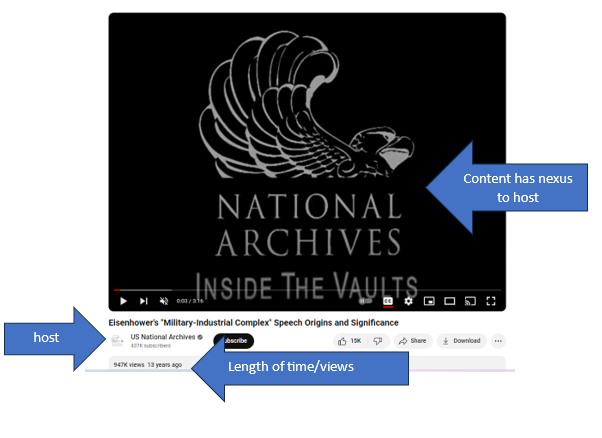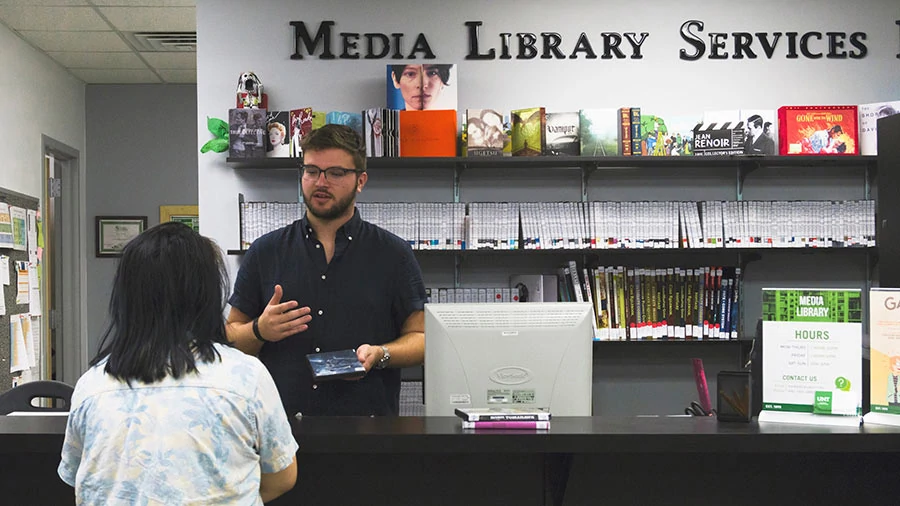- DSI CLEAR
- Theory & Practice
- Accessibility Online
- Copyright Guide
- Dos & Don'ts
- Videos on Copyright
- Usable Works
- Video Hosting Practices
- Compliance Checklist
- Checking Images for Infringement
- Creative Commons
- Public Domain & Licensing
- Exceptions & Defenses
- Copyright Statement Example
- More Copyright Resources
- Textbook Publisher Permissions
- Frequently Asked Questions
- Glossary of Copyright & Trademark Terms
- Subject Release Form
- Online Teaching
- UNT Syllabus Template
- Teaching Consultation Request
Video Hosting Practices
Including Videos from YouTube? Some best practice tips.
Videos can add value, engagement, resource diversity, and even fun to a course.
When selecting or assessing a YouTube video, as a best practice, please check to see if the video is well-hosted, meaning the person who has uploaded it to YouTube appears to have the right to do so. YouTube may allow ill-hosted videos to be uploaded, trusting that users only upload videos they have made or have rights to use. They may not catch copyright infringement at the upload stage.
What are some quick ways you can review your selection of content?
- Check the content creator as best you can tell from the video – is the content creator of the video the same as the person who uploaded it? For example, if the BBC logo is showing in the video identifying it as the creator, is the video uploaded by a BBC channel on YouTube or by FANZOFBBCMASHUPS?
- Check on the host – do they have a strange collection of unrelated content on their channel or does it seem like this content is appropriate to them? (Click on host name to get to channel information, other videos)
- Quality – does the video look strangely blurry, shaky, missing opening or closing credits? This can be a sign it was a recording made of a video by someone who was not supposed to do so.

Why does it matter?
- If something is not well hosted, the true owner could file a complaint with YouTube via their DMCA takedown notice process and the video could be pulled from YouTube without any warning to you – leaving you with a gap in your course!!
- This may not be important if it’s one optional video, but if it’s required and/or if you rely on this video for quiz or exam questions, discussion posts, etc.. that could be stressful for you mid-semester!

How can you gauge risks?
- How long has the video been on YouTube? If it’s 15 years compared to 1 year, you may feel it’s less risky?
- Ask yourself: Is the content something popular and well-known (such as current TV/movies/games, or a “big player” content; Examples might be famous people, actors, musicians, major TV/Movie production company content, brands such as Starbucks, Disney, Star Wars, Simpsons, Smurfs, Friends, NFL, BBC, or Pac-Man. Ill-hosted content containing this material may be higher risk, and something to avoid.
- Alternatively: Are you considering something less current or flashy – for example, a former professor created a homemade 2 minute clip of an obscure theatre production that aired 10 years ago, under his/her fair use determination several years ago, and it’s on a department channel. This may be something that feels “lower risk.”
What are some options?
- See if you can find a version on YouTube that is well hosted or consider alternative videos or articles that convey the same information. (search the title of the content)
- Search in the library yourself or contact the media team at the UNT library at medialibrary@unt.edu. or check with your subject matter librarian – The library experts may have help you find something in Alexander Street, Kanopy, or other places!

Finally, if you leave something in which is questionable, you may want to check it every semester to make sure the link is still valid.
Happy hunting for additions to your course!
References: YouTube Video Eisenhower's "Military-Industrial Complex" Speech Origins and Significance by the US National Archives; Adobe image 496308395.